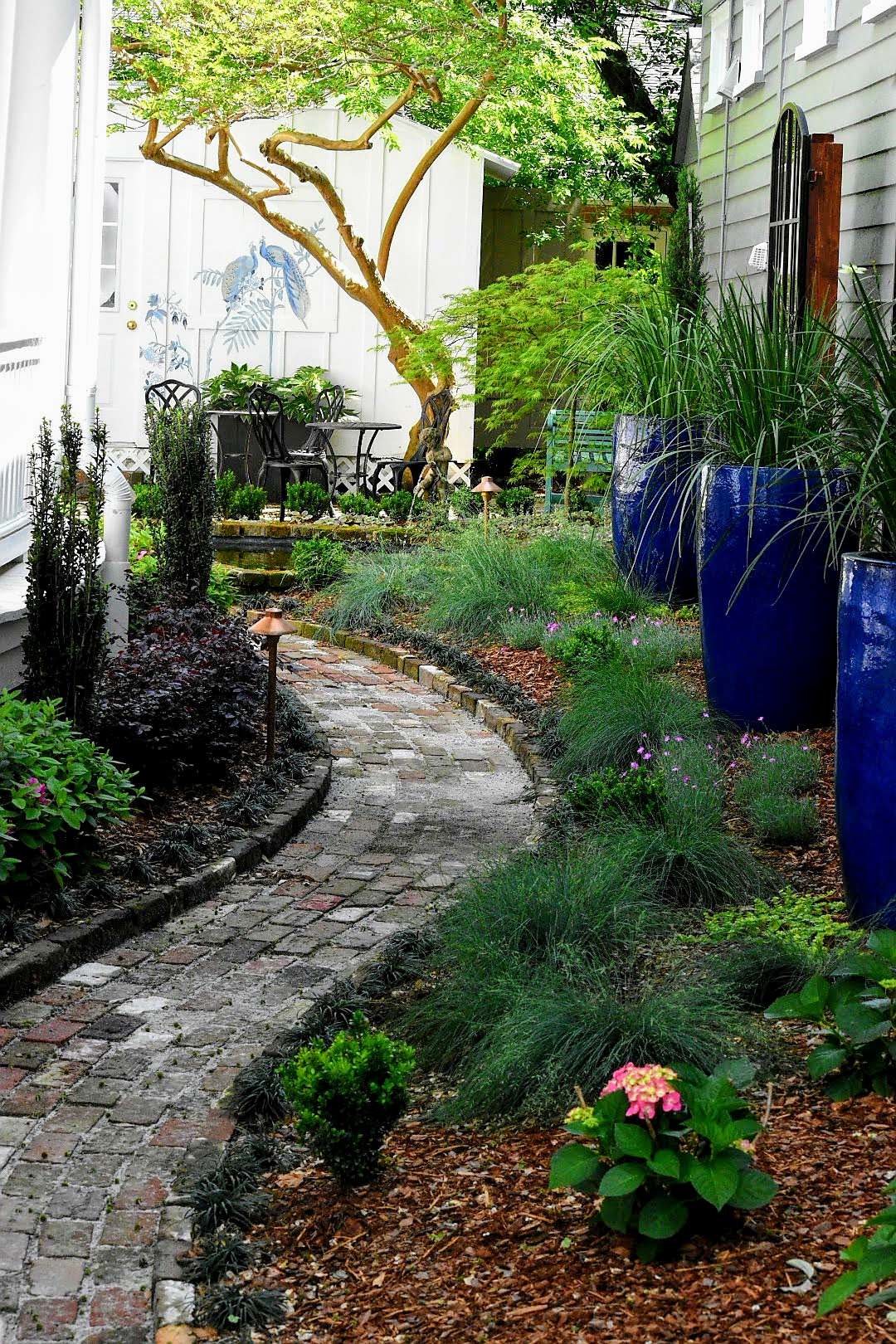Top Quality Landscape Design for Residential and Commercial Properties
Wiki Article
The Role of Garden Layout in Supporting Sustainability and Biodiversity
Garden design is progressively recognized for its prospective to promote sustainability and boost biodiversity within metropolitan and rural landscapes. By focusing on native plant species and utilizing water conservation strategies, designers can produce settings that not just thrive but likewise require minimal chemical treatment.Significance of Native Plants
Highlighting the usage of indigenous plants in yard design is vital for promoting eco-friendly balance and sustainability. Indigenous plants are those that normally take place in a certain area and have adjusted to the regional environment, soil, and wild animals. Their incorporation into yards supports neighborhood communities by providing environments and food sources for indigenous pollinators, birds, and other wild animals.Additionally, native plants are usually a lot more resistant to neighborhood pests and illness, minimizing the demand for chemical pesticides and fertilizers. This resistance not just decreases environmental influence however also lowers maintenance expenses for gardeners. Native plants usually call for much less water than non-native species, straightening with lasting gardening methods and decreasing the stress on regional water sources.
Water Preservation Strategies
Including native plants not only improves biodiversity but also plays a considerable function in water preservation within garden designs. Native species are adapted to regional environment problems, calling for much less water than non-native counterparts. Landscape Designer. This characteristic minimizes the need for watering, preserving both water resources and energyFurthermore, implementing rain yards can capture and filter stormwater runoff, advertising groundwater recharge while lessening erosion. These gardens use indigenous plants that flourish in damp conditions, efficiently taking care of excess water while creating diverse environments.

An additional effective method is using permeable paving products in paths and outdoor patios, allowing rainwater to penetrate the ground as opposed to running. This advertises moisture retention and decreases the demand for irrigation.
Lastly, setting up a rain harvesting system can substantially add to water preservation initiatives. Collecting and storing rain for garden use encourages lasting practices and minimizes dependence on municipal water sources (landscape design near Summerville South Carolina). By integrating these strategies, yard layouts can properly promote water conservation while sustaining ecological health and wellness
Minimizing Chemical Use
While several garden enthusiasts seek vibrant and healthy and balanced plants, minimizing chemical use is crucial for promoting a sustainable community. The dependence on artificial plant foods and chemicals can cause soil destruction, water contamination, and a decrease in beneficial insect populations. By embracing organic horticulture methods, gardeners can improve the health of their landscapes while advertising biodiversity.One reliable method is to my blog utilize compost and natural modifications, which enhance the soil normally and enhance its framework. garden design near James Island South Carolina. These methods not just enhance plant health and wellness yet additionally minimize the requirement for chemical plant foods - Landscape Designer. Implementing integrated insect monitoring (IPM) strategies better lessens chemical inputs by urging all-natural killers, such as ladybugs and parasitical wasps, to control pest populations
Additionally, picking indigenous plant varieties can significantly decrease the demand for chemical interventions, as these plants are better adjusted to local problems and are more durable against parasites and conditions. By focusing on lasting methods, gardeners can produce thriving environments that sustain both plant health and ecosystem integrity, eventually leading to gardens that are not just attractive yet likewise environmentally accountable. Lowering chemical use is an important action in growing gardens that honor and boost the natural world.
Creating Wildlife Habitats
Creating vibrant wild animals environments within gardens not only enhances biodiversity yet additionally enhances sustainable gardening techniques focused on decreasing chemical usage. By integrating native plants, gardeners can give crucial sources such as food and shelter for various types, consisting of birds, pests, and little animals. Native plants are well-adapted to local problems, calling for much less water and fewer chemical inputs, thus lining up with sustainability objectives.
Maintaining a naturalistic technique, which may consist of leaving some locations wild or undisturbed, allows for the natural processes of ecological communities to grow. This practice motivates the visibility of helpful pests and pollinators, which play an important role in the wellness of both gardens and surrounding atmospheres. In general, creating wildlife habitats is a basic element of sustainable yard design, fostering ecological balance and durability while enhancing the charm and performance of outdoor spaces.
Area Interaction in Gardening
Neighborhood interaction in gardening cultivates a feeling of belonging and collective responsibility, changing individual gardening initiatives right into common efforts that profit the entire community. By involving community members in horticulture tasks, we can grow not just plants however also connections and socials media. Regional yards function as crucial rooms for education, where people of every ages can learn more about lasting practices, biodiversity, and ecological stewardship.Collective gardening initiatives, such as area yards, advertise the exchange of knowledge and sources, making sure that all individuals can add and benefit. This inclusivity improves area durability, as members interact to overcome difficulties such as food insecurity and ecological deterioration. Additionally, area gardens can act as systems for cultural expression, allowing people to share their heritage via diverse planting and gardening strategies.
Moreover, engaging the community in gardening campaigns can lead to increased awareness of local environments and the importance of biodiversity. By functioning jointly to design and keep these spaces, homeowners foster a shared dedication to sustainability, producing a long-term effect on both the atmosphere and community communication. Inevitably, area engagement in gardening is a powerful device for promoting ecological stewardship and boosting the lifestyle within communities.
Verdict
By stressing the usage of native plants, carrying out water conservation techniques, and reducing chemical inputs, gardens can successfully sustain neighborhood environments. Collectively, these practices not just enrich the elegance of rooms but also advertise environmental balance, making garden style an important component in the quest of a lasting future.Report this wiki page